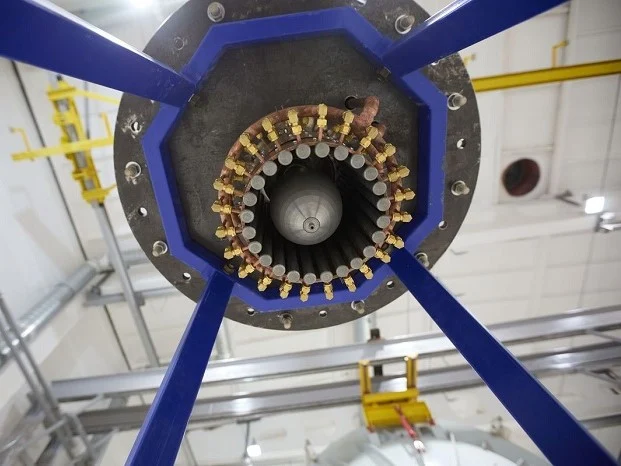Key Takeaways
1. Rosatom has developed a plasma electric rocket engine that significantly improves spacecraft propulsion with a thrust of at least six newtons and a specific impulse of about 100 km/s (62 miles/s).
2. The engine operates in a pulse-periodic mode with an average power output of around 300 kilowatts, potentially reducing Mars mission travel times from one year to 30-60 days.
3. The technology uses a magnetic plasma accelerator to accelerate charged particles, achieving speeds much higher than traditional chemical rockets.
4. Future testing will occur in a large vacuum chamber designed to mimic deep space conditions, ensuring the engine’s performance and reliability.
5. This plasma engine is expected to be the primary propulsion system for interplanetary journeys and space tugs, while traditional chemical rockets will continue to handle liftoff into orbit.
Russia’s State Atomic Energy Corporation, known as Rosatom, has unveiled a laboratory prototype of a plasma electric rocket engine that represents a significant advancement in spacecraft propulsion. Created as part of Russia’s expansive nuclear research initiative, the new engine produces a thrust of at least six newtons and has a specific impulse of approximately 100 kilometers per second (62 miles per second).
Engine Performance
Operating in a pulse-periodic mode, this engine maintains an average power output of around 300 kilowatts. Alexey Voronov, the First Deputy Director General for Science at the Rosatom Research Institute in Troitsk, suggests that this technology could significantly reduce travel times for missions to Mars—from the current one-year duration down to between 30 and 60 days. This reduction would also minimize astronauts’ exposure to harmful cosmic radiation.
Innovative Design
The core of this advancement is a magnetic plasma accelerator that accelerates charged particles to speeds nearing 100 km/s (62 miles/s). This is a considerable upgrade from the 4.5 km/s (2.8 miles/s) speeds typical of standard chemical rockets. Junior researcher Egor Biriulin notes that thrust is generated through an electric propulsion system that incorporates two electrodes. When high voltage is applied, it causes the charged particles to generate a magnetic field, which pushes the engine forward.
Future Testing
Tests are set to take place at a cutting-edge facility in Troitsk, featuring a vacuum chamber that spans four meters wide and 14 meters long. This chamber is equipped with high-performance vacuum pumps and advanced heat removal systems designed to replicate the conditions found in deep space.
One of the standout features of this plasma engine is its remarkable efficiency: the plasma does not need extensive heating, which helps prevent overheating of the engine components. Although traditional chemical rockets are expected to continue managing liftoff into orbit, this plasma engine is poised to take over for interplanetary journeys, potentially serving as the primary propulsion system for future space tugs that transport cargo between planets.
Source:
Link

